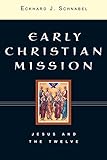How Paul understood his call (con't)
The second installment on Paul's understanding of his calling as a pioneer church planter.
By the grace God has given me, I laid a foundation as an expert builder, and someone else is building on it. But each one should be careful how he builds. For no one can lay any foundation other than the one already laid, which is Jesus Christ. If any man builds on this foundation using gold, silver, costly stones, wood, hay or straw, his work will be shown for what it is, because the Day will bring it to light. It will be revealed with fire, and the fire will test the quality of each man's work. If what he has built survives, he will receive his reward. If it is burned up, he will suffer loss; he himself will be saved, but only as one escaping through the flames. (1 Cor 3:10-15)
8. The metaphor of the building and of the activity of building refers, initially, not to the individual believer but to the church as a whole.
9. Paul likened his role as the pioneer missionary-church planter with a "skilled master builder" who lays the "foundation" (v10a).
Paul uses the metaphor of the master builder to describe himself as appointed and employed by God, together with a team of coworkers, to proclaim the gospel in pioneer situations, to lead people to faith in Jesus Christ and to establish new communities of believers. This is the foundation without which there would be no church in the city of Corinth.
The fact that Paul was active in Corinth for over one and a half years (Acts 18: 2, 11-12) clarifies that Paul regarded pioneer missionary work not as evangelistic Blitz whose results need to be consolidated by other preachers and teachers in follow-up work. For Paul, to lay the foundation included instructing the new believers in the fundamental content of faith in Jesus Christ and in the basic teachings of Scripture.
10. The foundation that Paul lays is Jesus Christ himself, specifically Jesus the crucified Messiah (1 Cor 1:23; 2:2).
For no one can lay any foundation other than the one already laid, which is Jesus Christ (1 Cor 3:11).
The crucified and risen Jesus Christ is the content of the missionary proclamation and thus the foundation and the measure of the establishment of the church and of the growth of the church.
The decisive factor in the mission of the apostles is not the missionary, the preacher or the teacher but the One who is preached and taught—Jesus Christ. As a building has only one foundation, there is no alternative to Jesus Christ: the existing foundation that Paul had laid in Corinth cannot be changed.
11. Preachers and teachers are responsible for the way they build on the "foundation Jesus Christ" (v:12-15) that Paul or other pioneer missionaries have laid.
In the ancient world, when a master builder had laid the foundation and left the city or died, catastrophes could happen if the builders who continued to work on the edifice were not careful to follow the measurements that were given by the foundation that already existed.
Herod I disregarded existing foundations during his rebuilding and renovation of the Jerusalem temple and sought to build his grandiose new edifice on newly dug foundations, it sank into the ground (Josephus).
Any builder who seeks to finish a building that has been started on foundations laid by another architect must adhere carefully to the benchmarks provided by the architect, even if the builder regards the style of the building as antiquated.
Missionary work and church work will "remain" on judgment day if and when Jesus, the crucified and risen Messiah and Savior, was at the center of the proclamation of the preachers and teachers, if and when Jesus was the criterion and standard of the behavior of the preachers and thus also the behavior of the believers.

Early Christian Mission (2 Volume Set), (Eckhard J. Schnabel)

